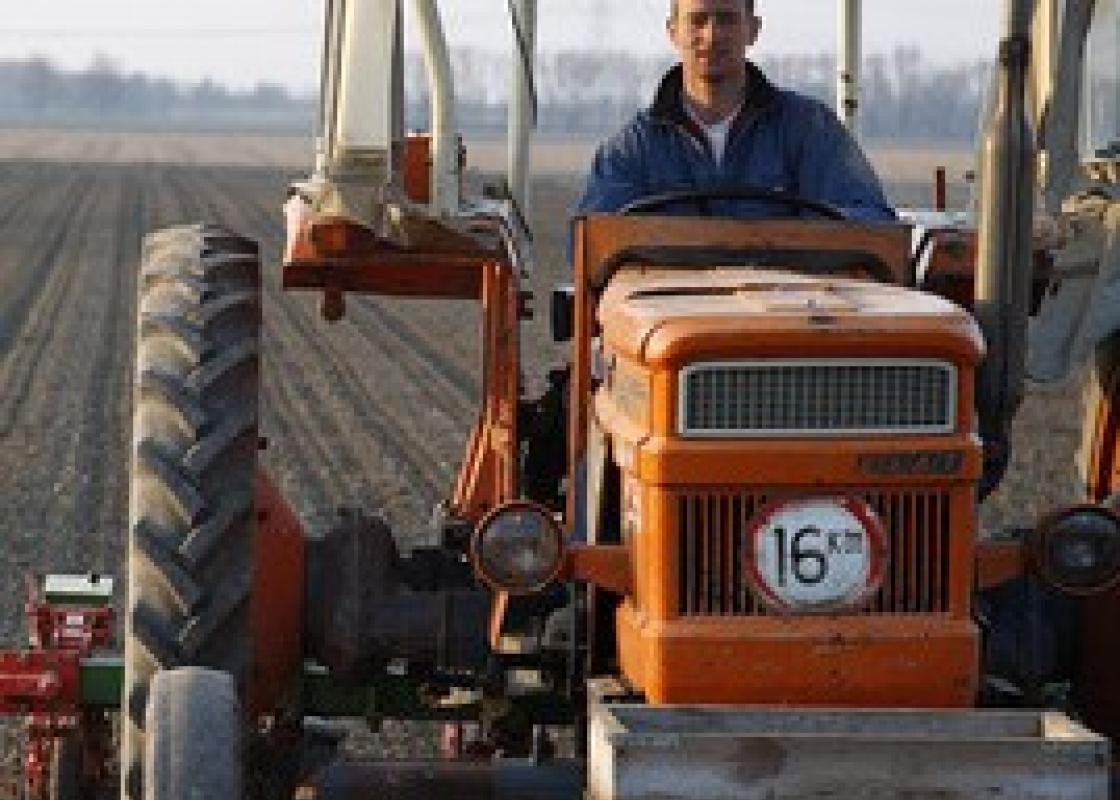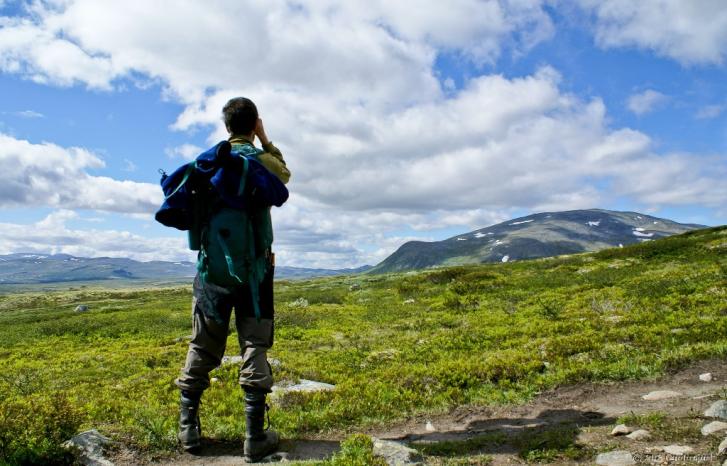“On many of the Norwegian tourist farms the men become the head chefs, but they also help to serve the food, prepare the rooms for guests, make the beds and do similar chores. In nature-based agritourism the men are more likely to step in as needed, and as a result they assume the position traditionally held by women – that of an assistant.”
This is according to Berit Brandth, a professor of sociology at the Norwegian University of Science and Technology (NTNU). Along with Marit S. Haugen, a research director at the Norwegian Centre for Rural Research, Brandth has studied what happens when farms are partly or wholly converted to tourism enterprises.
A new, flexible gender
“We asked ourselves what happens with gender on the farms when there is a shift in production. On the one hand you get a completely new kind of work – namely, service provision – carried out by people who are used to working in primary production. By the same token, it is still a farm with all of the traditions, conventions and expectations bound up in that, and it remains a household-based activity. The switch from a traditional farm to a tourist enterprise often occurs very quickly. This is why it is interesting to see what happens during these shifts, and how,” Brandth continues.
In farming, women have traditionally been seen as the “flexible gender”. They have had to help out by stepping in as relief workers and filling in for others as well as assisting with the work related to the animals, farm and forest. However, this work has primarily been the men’s responsibility, and it is the men who have received the credit for it. The women’s main responsibility has been the household, and the work done there has had lower status than the work done outside.
But some farms then begin to offer nature-based agritourism. The researchers see that the distribution of roles and responsibilities suddenly changes, and the men quickly end up being the “flexible gender”.
Office work regarded as low status
The researchers’ material is comprised of interviews with the owners of 19 farms throughout Norway. These farms are involved in nature-based agritourism, meaning that in addition to providing meals and overnight accommodation, they also offer outdoor experiences such as hunting, fishing, boating, rafting, and chopping down your own Christmas tree in the forest.

“We see that different kinds of changes are taking place. First of all, there are the structural changes – who does what. For example, we see that it is the women who most often become the general managers of the tourism enterprises. While she has always been involved to some extent in the organization of the household on the farm, her role now becomes formalized. She is the one who takes reservations, speaks with the customers, bank and contractors, and represents the company in various professional networks,” Brandth explains.
Office work or “city work”, however, does not have a particularly high status within the farming industry.
“It is the heavy, physical labour that has been valued most highly, and this is still the case. In the interviews we also see that the women themselves speak a bit condescendingly about the office work they do. At the same time, though, we can’t ignore the fact that there is a kind of empowerment attached to this responsibility. She is the one who has control of the finances and who represents the company vis-à-vis external parties.”
Housework becomes exercise
While she handles the paperwork, he often performs other indoor chores, such as in the kitchen.
“Of course, being a chef or head of the kitchen has a certain masculine status – just think of all the superstar chefs who are men. It is obviously a different matter to be in charge of the kitchen when it is part of the business activities. But many men also do some of the housework that has lower status, such as serving food and preparing the rooms for guests.”
From their interviews Brandth and Haugen see how new interpretations of the female and male roles are being tried out.
“One man talked about how he turned housework into exercise by running up and down the stairs and between the rooms. In other words, he assigned a slightly different meaning to housework than the norm. Another man explained that he was mainly responsible for preparing the rooms in the cabins down by the sea. The boats and fishing was his area of responsibility anyway, so the housework he did was related to something that had already been established as a masculine domain.”
Four versions of the forestry worker
In fact, everything related to outdoor activities is and remains his arena. It is here where the traditional, rural concept of masculinity lives on.
“In this setting we also hear how the men talk a bit condescendingly about “city folk”, while they talk up rural masculinity as being the most valuable because it means a person has mastery over nature. At the same time, this part of the farm’s activities has taken on a stronger element of service provision. You have to take care of the guests and show them you care, tell them stories during their stay, maybe in several different languages, and turn their stay into an experience. The men also have to think about their body and appearance, and how they present themselves. So we also see this concept of masculinity shifting towards the more urbane,” says Brandth.
This is in keeping with another research project that she and Marit S. Haugen conducted two years ago when they looked at four decades of Skogeieren, the Norwegian professional journal for forest owners, and studied the masculine images and ideologies conveyed there. The researchers found that new interpretations of rural masculinity emerged every decade.
“We began in the 1970s, when there was a very traditional and gendered but also a good-natured type of man who toiled in the forest with simple tools, a tractor and sometimes a horse. Then came the 1980s when we saw a very macho type of man who used machines and a chain saw. Whereas in the 1970s it was mainly the farmer who worked in his own forest, we now see the “contractor” coming onto the scene.”
In the 1990s, however, the forestry worker dresses in a suit and tie, according to the researchers’ interpretation of Skogeieren.
“Here we see the organization man as the most dominant image. He is often standing at a podium, and is quite likely to be a politician or have other kind of organizational experience. He is still out in the forest, but there is clearly a certain amount of authority associated with this management type. At the same time, the researcher or expert is also part of the picture, the one who develops plans for tree cultivation and felling.”
And this image changes yet again when we come to the year 2000 and onwards.
“Then the forestry worker often deals with the tourists and other guests out in nature, acts as a guide and provides services. All these changes show the dynamics in gender and how interpretations of masculinities and femininities change along with the type of work being performed,” Brandth says.
Hybrid women
But despite all the changes in how the work is divided up: When the tourism enterprise is marketed, the couple is still the focal point.
“An important part of what they are selling is the homey, rural and very cosy aspects of farm life.”
“Would this be the case if, for example, two brothers were running the business?”
“Well, we know of homosexual couples, for instance, who are involved in nature-based agritourism and who seem to be doing very well, but this isn’t part of our data, so I can’t really comment on that,” says Brandth.
She also makes another important point, namely that the women who begin in nature-based agritourism have usually worked in jobs outside of the farm.
“They don’t just continue with the same housework they have always done. Instead, these are women with both an education and experience from the working world who quit their jobs to focus more professionally on the farm and tourism.”
“You write about the dramatic shifts between rural and urban masculinities. Can we also talk about similar shifts between rural and urban femininities?”
“At the end of the 1990s we analyzed Bygdekvinnebladet, a Norwegian journal for rural women, and tried to get a grasp of rural feminism. It turned out to be rather traditional – an advocate for the homemaker in keeping with the model of the ideal farmer’s wife. But in connection with agritourism, the women are mainly concerned with taking on a professional persona – that is, living up to the ideals of a very modern, service-oriented female role. Nonetheless, they are selling a product that includes the farm and village life, everything that is rural, as a key part of the package; otherwise their business would be just another restaurant or hotel in the countryside. So we definitely see that they combine the traditional and the modern in a variety of ways,” Brandth concludes.
Translated by Connie Stultz
Berit Brandth is a professor of sociology at the Department of Sociology and Political Science at the Norwegian University of Science and Technology (NTNU) as well as a senior researcher at the Norwegian Centre for Rural Research.
Marit S. Haugen is a sociologist and a researcher director/senior researcher at the Norwegian Centre for Rural Research.
Both women have worked extensively on research projects that explore various interpretations of gender in agriculture.

